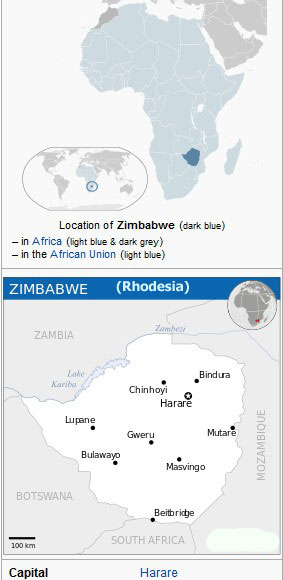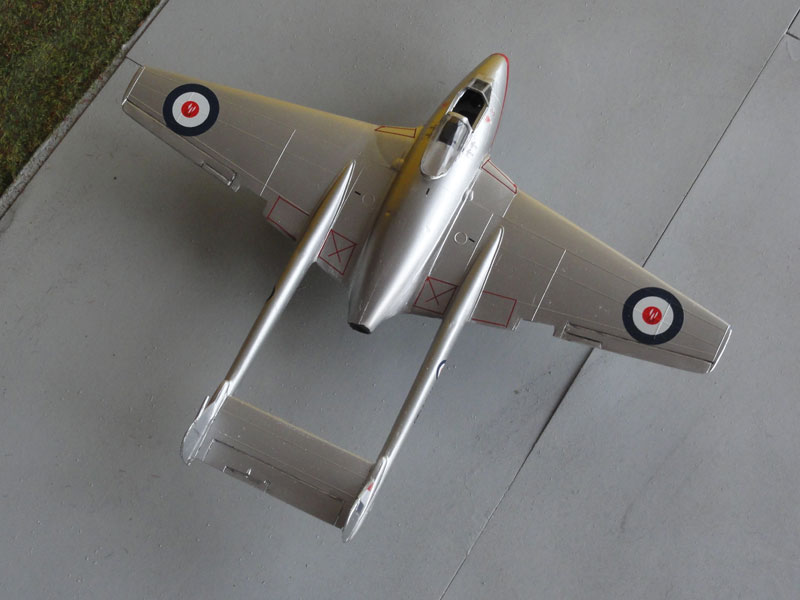[ Page 1 ]
1/72 scale model kits of De Havilland Vampire

The De Havilland company in the United Kingdom designed during the Second World War a jet fighter and it was the time that development with this new type of propulsion began. The design from Air Ministry specification E6/41 incorporated a twin boom tail with a small thick fuselage that contained the jet engine. The wing was unswept and some structure was made of wood. Known as Vampire DH.100, it was a single seat aircraft with initially a Halford H.1 turbojet engine (that later evolved into the Goblin engine). First flight was amidst the Second World War in September 1943.
The Royal Air Force ordered the type but the first squadron with aircraft really became operational not earlier than 1946 with the Mk.1. It had curved wing tips and bit more squared vertical tail fins. The canopy had a central sliding hood. Later Mk.1 produced Vampires had a Goblin 2, modified top and pressurized cockpit. Maximum speed was about 550 mph (885 km/hr) and it could carry 4 x 20mm cannons and a variety of (unguided) rockets. The F Mk.1 was used by the RAF but also by Sweden als J-28A and Switzerland.
The F.2 was a Mk.1 with the more powerful Nene engine (this was the same engine that the Soviet Union was allowed to built in license and that powered the MiG-15 !). The Nene required extra air and initially a pair of extra elephant ear intakes were fitted first at the fuselage top; but after accidents aircraft were modified with intakes now fitted in the lower fuselage.
The Mk.lll / F Mk.3 Goblin 2 powered Vampire fighter got increased tank capacity, the possibility to carry additional tanks and modified more rounded tail fins. The horizontal stabilizer was also slightly different and set in a lower position.
The FB Mk.5 was the fighter-bomber version especially envisaged for ground attack and had the possibility to drop about 1000 kilograms of bombs and rockets and could carry under wing tanks. It still had the Goblin 2 but got reinforced wings with a smaller span with 2x1 ft clipped wing tips. As it was heavier it got a modified stronger undercarriage.
Some 20 Vampires FB.5 were fitted with an arrestor hook, enlarged flaps, brakes and reenforced structure and were delivered to the Fleet Air Arm as "Sea Vampire".
The FB.6 was a modified FB.5 that got a Goblin 3 jet engine and its export version was the FB.52. (with Fiat in Italy bmanufacturing the FB.52A).
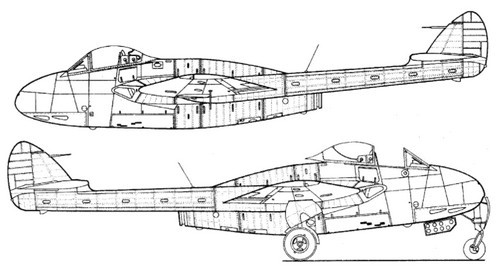
The FB.9 had a Goblin 2 and was to be used for operations in warm environments and thus had better cooling for the pilot and a modified starboard intake vane to get more air. The RAF Auxiliary squadrons also used this version.
FB.30 and FB.31 were fitted with more powerful Nene engines with auxiliary extra intakes and built in Australia for the RAAF.
FB.53 had the Nene 102B engine.
Two seater versions developed included the DH.115 or T.11 and subversions like T.55, T.33/ 34 / 35.
(The Vampire evolved also to the quite different advanced DH.112 Venom ground-attack and night fighter also for use from aircraft carriers).
France had also flown the FB.5 from 1949 onwards. Sud-Est developed the Mistral, a Vampire fitted with Nene engine, larger air intakes and different top fuselage shape without the auxiliary extra intakes that RAF Nene Vampires had. This French type was called the Mistral and the first aircraft designated SE.532 did not have ejection seats. The SE.535 got French ejection seats (and many seats retrofitted to the SE.532).
The RAF operated the Vampire in the Cold War as a front-line fighter until 1953. Later on many aircraft got secondary roles such as training and ground attack. The Vampire was also exported to many countries all over the World. Almost 3,300 Vampires were manufactured (many also by English Electric company) with an additional approx. 1.000 built under licence by Macchi-FIAT in Italy, in Australia and the "Mistral" by Sud-Est in France.
Vampires flew in various conflicts like the first Arab–Israeli War, the Malayan Campaign and the Rhodesian Bush War.
A whole series of Vampire models will be made and presented on these webpages.
page 2
page 3
The Vampire as a 1/72 model was released by several kit manufacturers. One of the first 1/72 models was from FROG from 1971, which kit I do not further know.
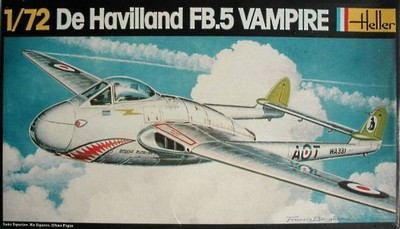
A better kit of a Vampire FB.5 was made by HELLER in 1979 (also released in a Revell package from 1991 and by many other brands but often more or less copies of the Heller kit).
Now some more detailed kits are available by MPM used the Special Hobby and Azur brands and also in a Revell release (to be made all as well).
Amodel had though short run a kit and CMR a kit in resin. But the Heller kit is quite nice and cheap.
Of a two seater Vampire T.11, Airfix
released a very nice 1/72 kit in 2012 (also to be made).
HELLER
The Vampire FB.5 kit (no.283 but also released in various boxes with different decals) has about 40 parts. Wing tips are clipped and dimensions and shapes look OK.
Parts layout is seen here:
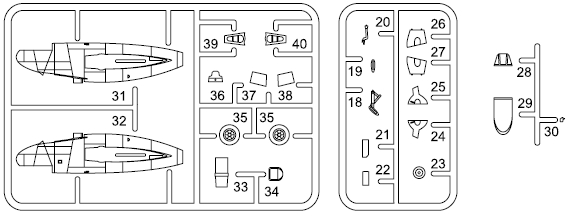
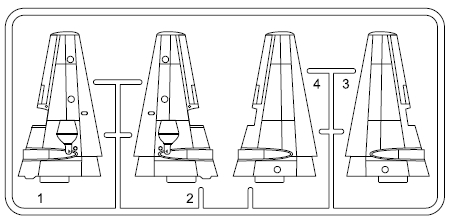

REVELL
The Vampire FB.5 kit #03993 is the same
as the Heller kit
but reboxed. (not to be confused with the later Revell kit #03934 which
used the MPM mould under Special Hobby label).
The built is quite straight forward! Only some putty was needed as the tail boom joints and the lower nose canon section. Some white glue was used on the windscreen to close the gap.
The kit 03993 released in 2011 has
nice decals for
(1) FB.5 of RAF no.112 squadron as
based during the Cold War at Bruggen in Germany in 1953. It has a camouflage
scheme.
(2) FB.5 of RAF no.112 based at Fassberg
Germany in 1951 with a silver dope scheme.
The red roundel dots are separate
decals to avoid mis-alignment but the RAF "blue" colour is I feel too dark.

Panel lines are raised but fine. I retained these for these small
models. The transparant parts with separate
windscreen look good. The interior has a seat and stick and is rather small
off course. The head rest part #36 was made a bit smaller and a few side boxes
added on the cockpit sides for instruments.
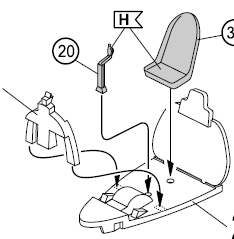
A lot of weight (more than 10 grams)
is needed in the nose to avoid a tail sitter. (*I did not put enough weight
in the nose.... as I found out later). The two tail booms need careful
alignment to have a good symmetrical result. Nice is a separate pair of air brakes.

The separate part #15 for the canons
needs a thin sliver of plastic card to get a better fit without a gap.
The nose wheel is quite nice with a separate wheel. The outher main gear
doors are shown I believe swapped in the instructions (so #26 should be
on left and #27 at right side).

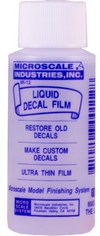
..
The first Vampire model released by Heller was made as a Rhodesian Air Force aircraft as used during the "bush war".
The model got a high speed silver
paint finish. Note that the Vampires were NOT natural metal coloured, many
sections were wood and primed. It got a silver dope.
Any gloss silver can be used here.
I airbrushed Revell Aqua Silber acrylic no 90.

Ensure that the model has absolutely
no scratches as these are well seen and will spoil model appearance. I
used a nail polish sanding block.

Overall a gloss transparant coat was airbrushed onto the model of Johnson Future/Pledge varnish. Anti-collision lights also on the wing tips were painted and canopy installed, fixed in place with tiny drops of white glue. That completed the tiny model.
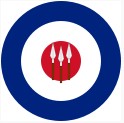 .
. .
. 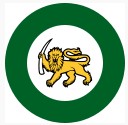
 .
.
later flash 
Rhodesia was
part of the British Commonwealth and an air unit was established in 1935.
The British war effort was supported during the Second World War and local
aircraft were types like the Hawker Hart and Audax. After the war, the Southern Rhodesia
Air Force used a variety of aircraft like the Spitfire. In 1953 an order
was placed for the first jets: sixteen Vampire FB.9 (no. SR100 to SR115
and later on RRAF 100 to RRAF 115) and sixteen Vampire T11 trainers (no.SR116-SR131
and later RRAF 116 to RRAF 131). The main base was New Sarum near Salisbury.
In 1954 the
air force became the Royal Rhodesian Air Force. Some 16 Vampires FB.9
and 13 FB.52 (ex-SAAF) were used along with quite some T.11 and
T.55 (ex-SAAF) trainers. Most Vampires were operated
by no.1 and later no. 2 Fighter Squadrons and most aircraft had
a high speed silver scheme. Later on a camouflage scheme was
applied.
Meanwhile in the late 1950s, Canberra
aircraft
as well as Provost trainers and C-47 Dakota transports were delivered.
The fighter role of the Vampire was taken over by some 25 Hawker
Hunters FGA.9
delivered in 1963 along with a T7 trainer. For the attack role the
Vampires remained in service
and they got a camouflage scheme and the first local guerilla fights
were
fought at the borders.
Rhodesia became
and independent republic in 1970 and the air force renamed Rhodesian
Air
Force. During many years a "bush war" was fought. Siai Marchetti SF.260
aircraft are also used along with Reims Cessna 337.
After drastic
political changes in 1980 Rhodesia became Zimbabwe with the air force
called
the "Air Force of Zimbabwe". Some Chengdu F-7 fighters and FT-7 and
FT-5 trainers were acquired from 1987 and a few Mil Mi-8, Mi-25 and
Mi-35 helicopters used.
 ....
....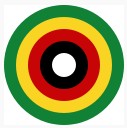
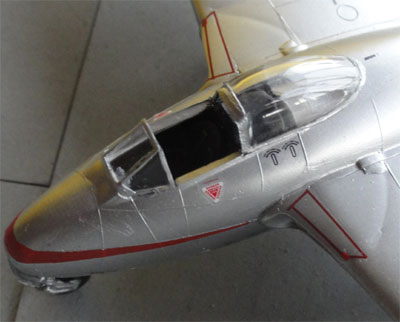
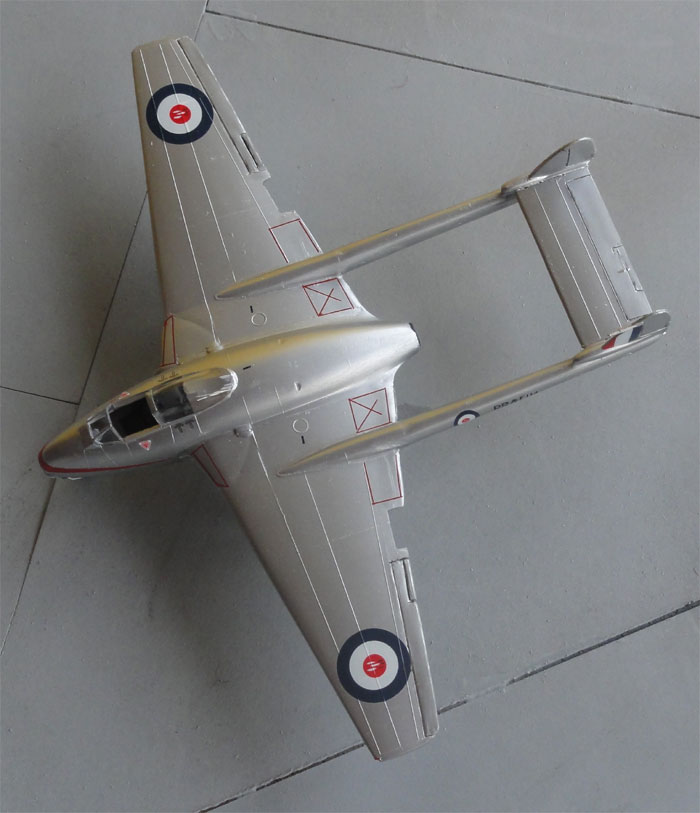
Royal Rhodesian Air Force / no.2 Fighter Squadron / Vampire FB.9 with no. RRAF 114

Another Revell released Vampire 1/72 kit was made.
This model was finished again in the silverdope scheme as described for a Rhodesian used Vampire, but now a FB.mk 52 of the Lebanese Air Force. As before, decals came from the ESCI set.
I did not manage to put enough weight in the nose... so a small rod below the aft fuselage was needed to keep it nose down...
 ...
... ..
.. .................
.................
The Lebanese
air force ("Al Quwwat al-Jawwiya al-Lubnaniya") was founded in 1949 assisted
by RAF advisors and got British aircraft. The main base was at Khaldeh/Beirut
and Rayak. A first Vampire T55 trainer was received August 1953 followed
by six Vampire FB.52 aircraft and another two T55 trainers used by Pursuit
Bomber Squadron, later no.1 squadron. In 1956 tensions increased because
of the Suez crisis and Lebanese leadership rejected to join the proposed
"United Arab Republic" of Nasser. The Vampires were used to fights small
opposition groups. The UK delivered six Hunter F.mk6 fighters in November
1958 and probably another seven refurbished Vampire FB.5 and FB.9.
In 1968 French
Mirage
III aircraft were obtained but these were sold in 1970 to Pakistan.
Current aircraft in the Lebanese armed forces are mainly helicopters.
[ Lebanese single
seat Vampire registration numbers were L152, L153, L155- L158, L161-L167
]
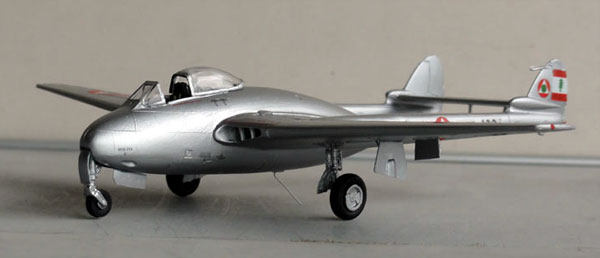
Vampire
FB.mk52 Lebanon air force "L155"

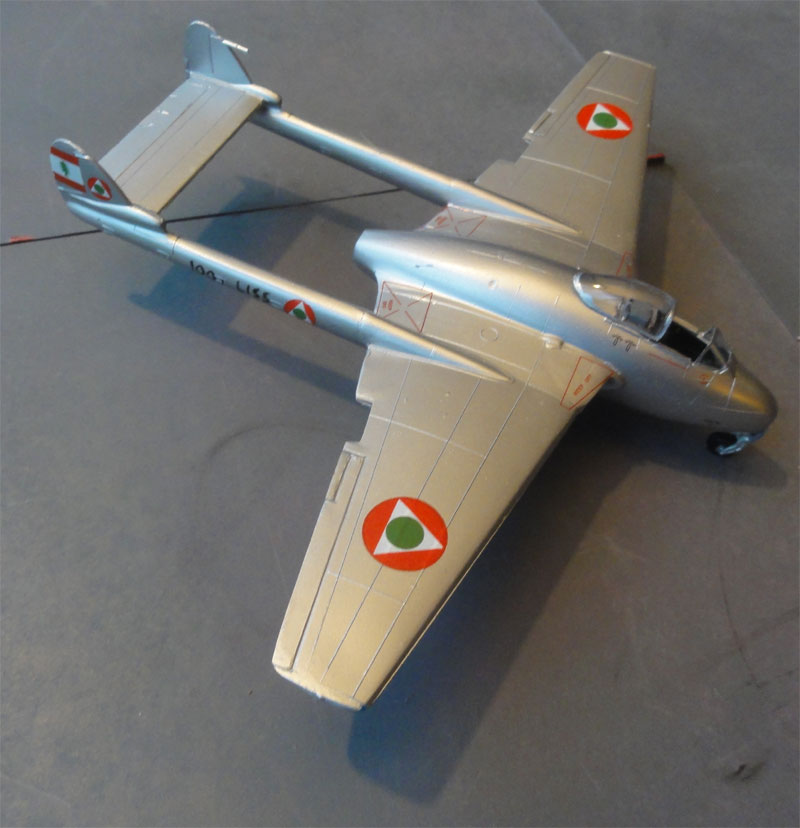

Another Revell released kit was made
as Vampire FB.Mk.52 of the "Ejercito de Venezuela". Basic color airbrushed
was Revell Aqua Silber acrylic no 90. Again, decals came from the ESCI
set.
For this model a more "dull" well used aircraft was represented. This was achieved by airbrushing a semi-gloss varnish top coat by mixing into the Johnson Future/ Pledge 5% of Tamiya X-21 Flat base matting agent.
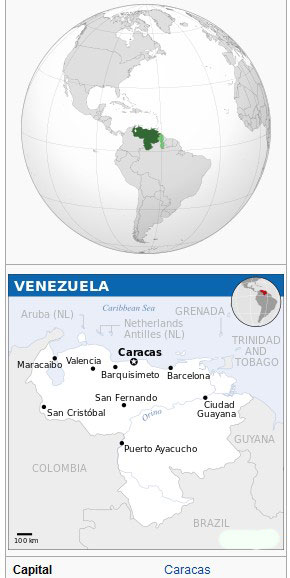 ..
.. ..
..  .... ..........
.... ..........
In Venezuela
military aviation started with the Air Academy in 1920 with some French
Caudron aircraft and Breguet aircraft. In the 1930's a first base was established
at Boca del Rio and aircraft purchased from France, England and the United
States. Venezuela had large oil fields and its oil was important in the
Second World War.
The
Fuerza
Aerea Venezuelana (FAV) was formally established in October 1947.
Several
aircraft like the P-47 and transport aircraft were used. The first
Vampires
FB-Mk52 arrived in Venezuela in late 1949. They replaced aircraft like
the surplus P-47 Thunderbolt. The Vampire was the first jet used by the
FAV. A total of 24 FB.Mk52 were obtained. In 1955 DH Vampires T.Mk.55
two-seat
trainers were delivered. Later in 1961 all Vampires became part of
Fighter
Group No. 12, together with the Venom and F-86F Sabres. Some 35 B-25J's
Mitchells were acquired from 1949 for the bomber role. They were
replaced by the E.E. Canberra as bomber/attack aircraft. From
1968 the Vampires were replaced by the
American F-86K Sabredog.
(for later aircraft, look here such as the T-2 Buckeye...)
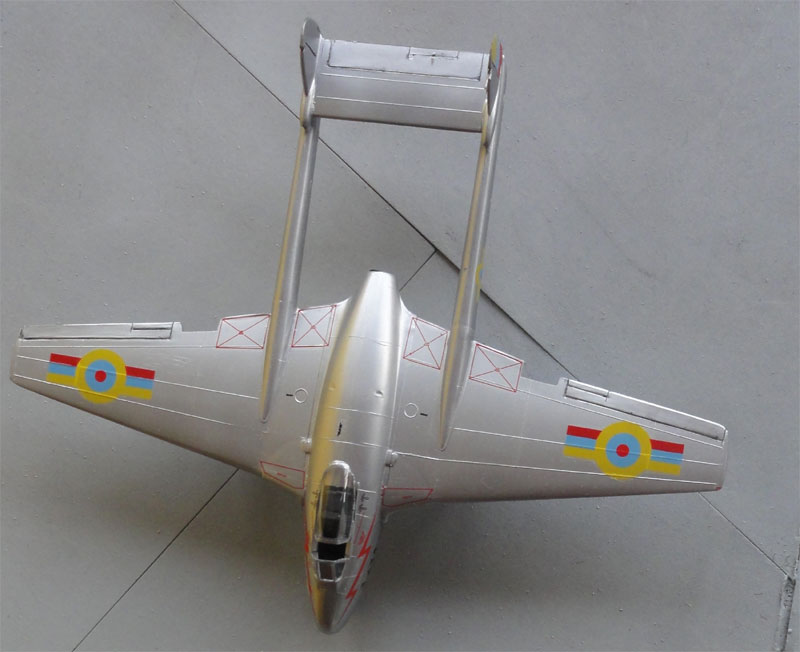
Vampire
FB.Mk 52 Venezuela

On
to next [ Page 2...]
Back to 1/72 Models.......
- DH Vampire, The complete history, David Watkins, Budding books, 1996
 ...
... .........
.........
- Profile publications no.48, Francis Mason, U.K , 1965
Web:
https://en.wikipedia.org/wiki/De_Havilland_Vampire

(c) Copyright Meindert "designer"/ All rights reserved. Your comments are welcomed by webmaster
Created this page
January 11, 2017

